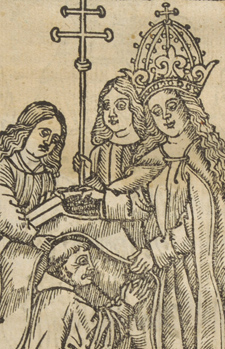
Vanished Worlds, Enduring People
Language and Education
The problem of conversing with each other was immediately apparent to both Europeans and natives, who employed a number of expedient and creative solutions to bridge the initial gap. Cortés’s use of a native woman, known to history as Doña Marina, to communicate with Nahuatl speakers is one well-known example. Europeans quickly sought to circumvent such ungainly procedures by encouraging, even kidnapping, young people to learn European languages, then bringing them back as interpreters. Squanto, who was of such great help to the Pilgrims in Plymouth, had spent time in Europe. And to facilitate trade, native groups developed pidgin dialects, or jargons, of their own languages to communicate with Europeans.
Missionaries, who recognized the importance of speaking the native tongue of their parishioners, developed vocabularies and dictionaries to learn local languages. In North America, the dual goals of Christianization and education soon mandated that missionaries teach their parishioners to read.
Native groups did not always embrace the efforts of missionaries and others to educate their children, noting that education often diminished understanding of traditional culture. Other Native Americans viewed education as a way of appropriating useful technology. Many Indians learned to communicate using European alphabets, and Sequoyah, a Cherokee, developed a written representation of the sounds of his language as early as 1812.